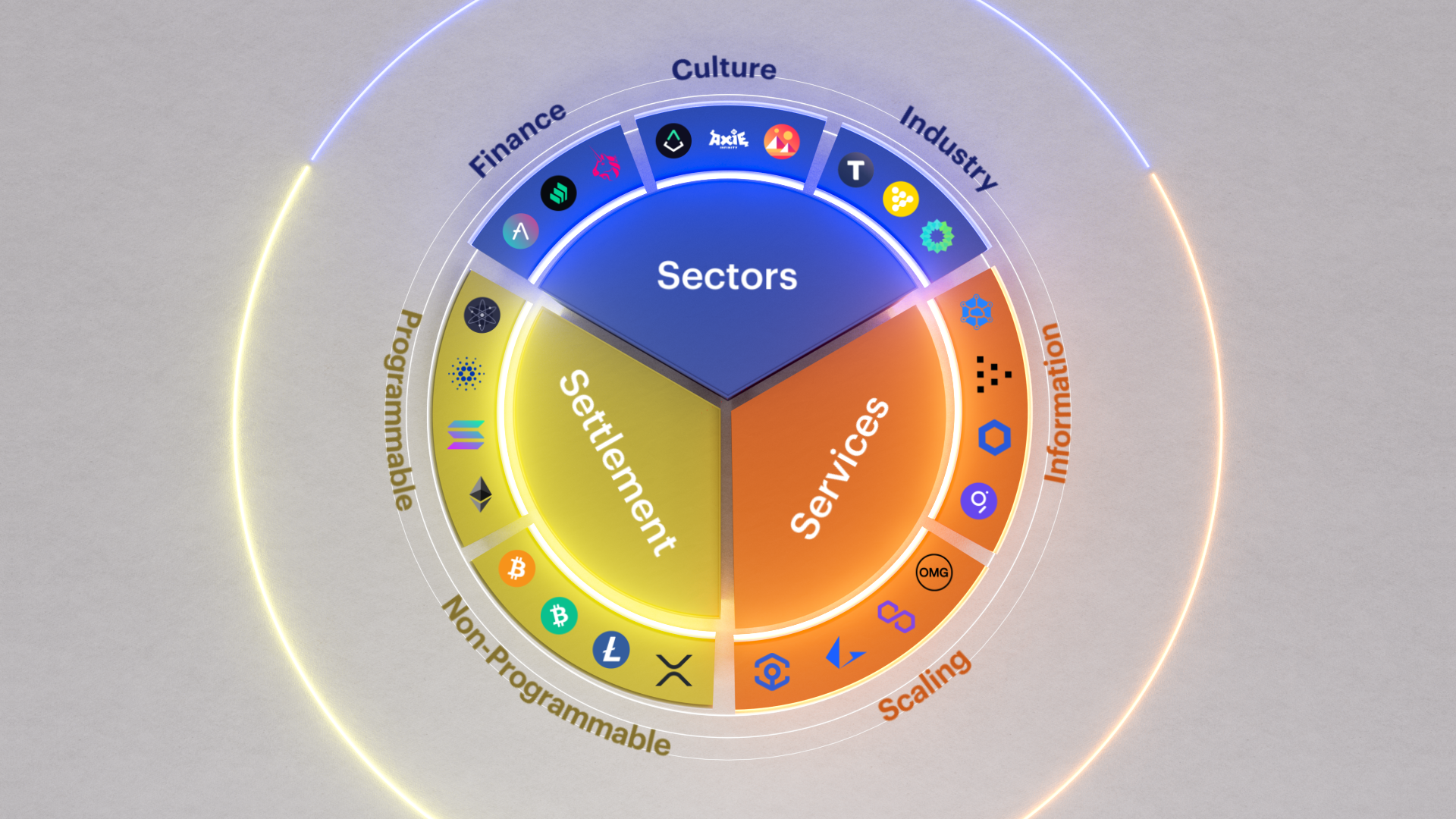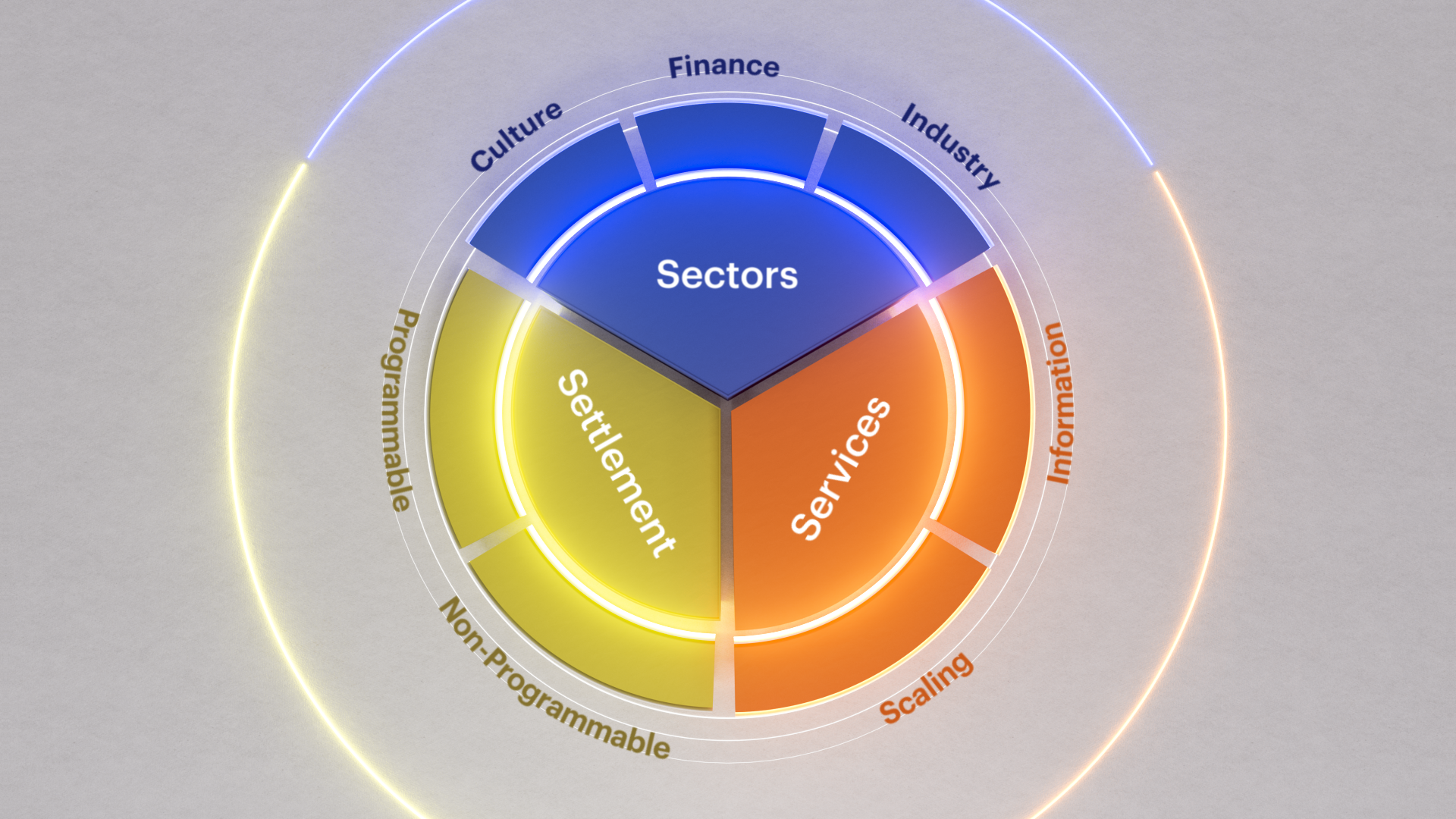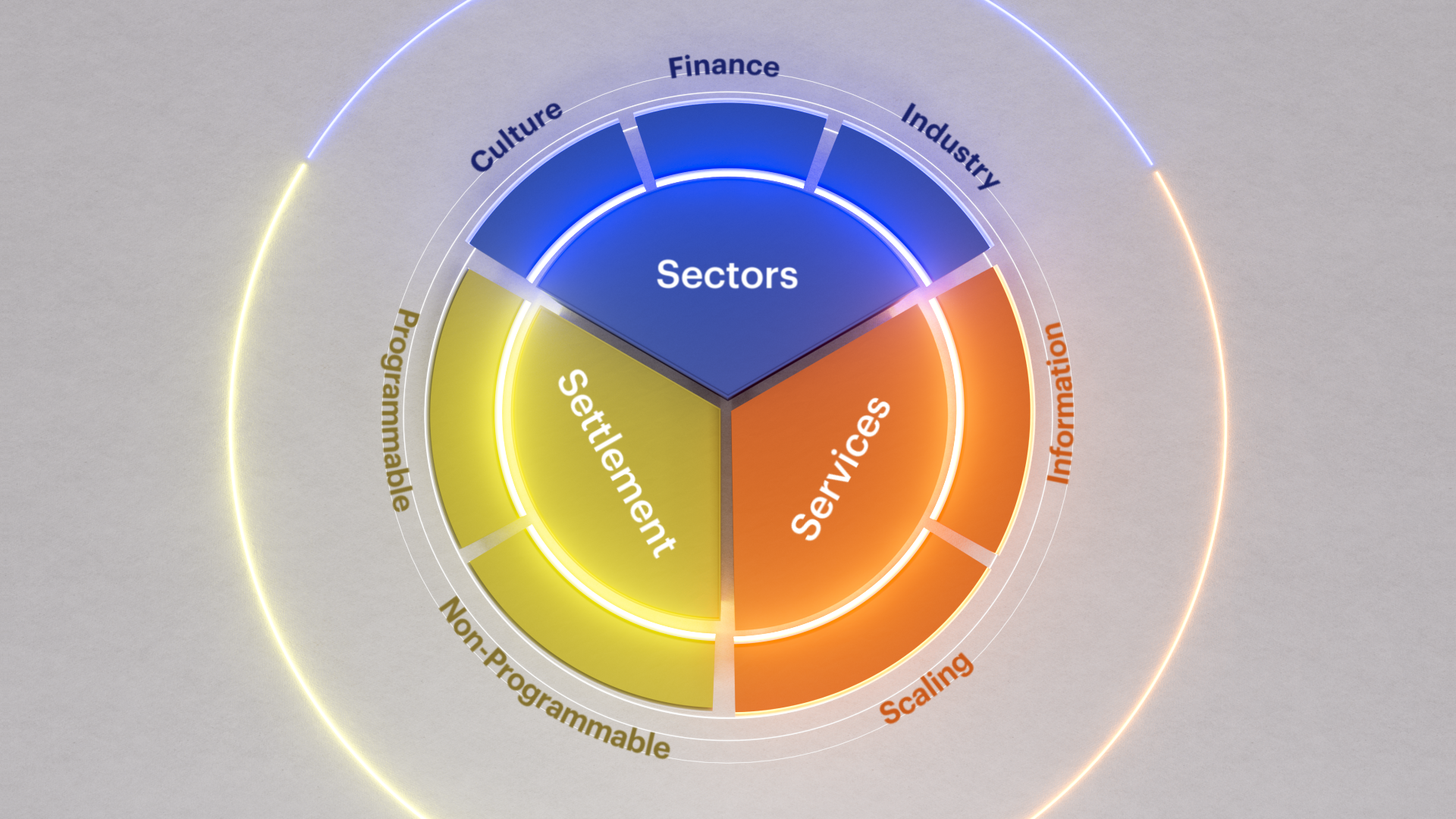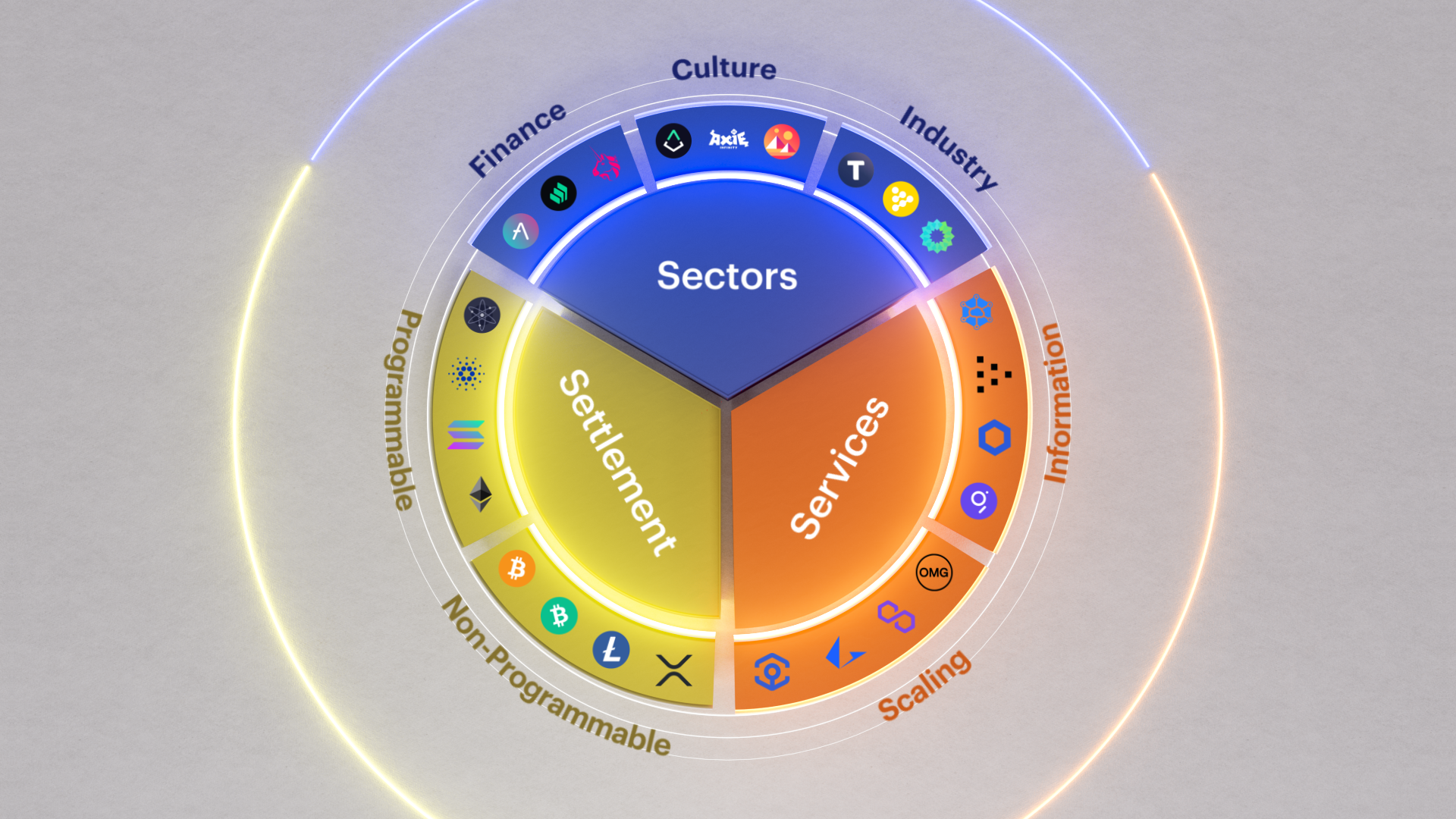Introducing the CF Digital Asset Classification Structure
CF DACS is intended to assist investors to better understand the blockchain economy, and thereby to support the portfolio construction and analysis process


Meet the CF Digital Asset Classification Structure (DACS), a solid foundation for investing in the digital universe
Key points
- Why CF DACS is needed so urgently
- Key CF DACS questions answered
- Deep dive into the CF DACS Universe
- The importance of eligibility
- Watch the video
- CF DACS Methodology Guide
Wall St already went DeFi
Even as institutional demand catalysed the assimilation of Bitcoin and Ether into traditional capital market structures last year, it’s no secret that institutional attention had already moved well beyond Bitcoin and Ether.
Take Goldman Sachs’s global foreign exchange strategy team saying in October 2021 that—with due provisos—DeFi should be considered “as one of the most compelling use cases of blockchains and cryptocurrencies that is helping drive value for these assets”.
That epitomized a clear swing in stance by high-profile banking, investment, wealth management and capital market firms towards some of the least-regulated, most experimental and riskiest investment trends of all.
High double-digit yields common in DeFi, compared to the low-to-negative income available from traditional ‘yield-bearing’ assets, are one spur.
An acceleration of almost 1000% in total value locked between the end of H1 2020 to the third quarter of last year, according to Goldman, is another.
And DeFi is just one digital asset category that emerged in recent years before investment market interest surged in 2021.
Spending flood
-
Goldman’s equity research team’s tally of private equity investment across online games, AR, and virtual world categories during 2021, was $10.4bn across 612 deals, up from $5.9bn in 2020
-
Combined with expected Meta Platforms Inc. spending over the next three years and growth estimates on underlying holdings of the META ETF, the group concluded that the most likely three-year investment scenario was somewhere between c. $135bn-$700bn
Way past time for a crypto ‘GICS’
Against this backdrop of exponential investment growth, the digital asset sphere’s infamous ‘work-in-progress’ characteristics—infrastructural, security and regulatory deficits at both application platform and market platform levels—are all the more urgent to address.
Even more fundamentally, given their recent emergence and rapid development, several aspects of what certain digital asset technologies actually are, and do, remain unclear.
The incomplete state of definitions across much of this emerging industry are of particular concern to CF Benchmarks as we pursue our commitment to benchmark prices and indices of the highest integrity, transparency and accuracy.
Market definitions and classifications that provide a robust foundation upon which to build high-quality index methodologies and policies are critical for the fulfilment of that commitment.
That is why CF Benchmarks has applied its methodological expertise to the creation of the first digital asset classification system by a regulated Benchmark Administrator – the CF DIGITAL ASSET CLASSIFICATION STRUCTURE (CF DACS).
CF DACS Q&A
Answers to three basic questions provide a quick idea of DACS’s features and background:
What is CF Digital Asset Classification Structure (CF DACS)?
Put simply, CF DACS is a coherent classification structure by which to segment the digital asset universe.
How was CF DACS developed?
Having recognised the need for such a structure, CF Benchmarks adapted and refined the type of conceptual framework that is common in traditional asset classification systems—for instance GICS, developed in 1999 by MSCI and Standard & Poor's, or the Industry Classification Benchmark (ICB), launched by Dow Jones and FTSE in 2005—to create the first ever digital asset classification system published by a regulated crypto Benchmark Administrator.
CF Digital Asset Classification Structure (CF DACS) is the result, bringing institutional product-ready standards of definition and clarity to the world of digital assets for the first time.
What is CF DACS for?
The CF DACS is intended to assist investors to better understand the blockchain economy, and to thereby to support the portfolio construction and analysis process, including by facilitating the construction of portfolios that capture any digital asset, entire value chains, or blockchain economic categories.
CF DACS: A Three-Part Model of the Digital Asset Universe
The validity and utility of any asset classification system pivots on its ability to incorporate the chief characteristics of the asset class in the present, and to demonstrate a cogency that can maintain that utility into the future as the asset class evolves.
Our formal public document on CF DACs – ‘CF Digital Asset Classification Structure (CF DACS) Methodology Guide’ – expands upon how CF DACS meets those prerequisites.
A summary of key points from the ‘Classification Overview’ section of the guide follows.
As shown in the image below, the foundation of the CF DACS is a representation of the digital asset universe as an overarching tripartite system.
It is overlaid with several subdivisions, to account for related but distinct digital asset subsectors within their major segments.

It is immediately clear that CF DACS models the digital asset universe into three major segments: Sectors, Services and Settlement.
These are then split into several further subdivisions. We expand upon them below:
- Sector Applications – service protocols:
- Finance - chiefly relating to DeFi
- Culture - DApps related to creation, engagement or consumption, of art, music, entertainment, games and other cultural activities
- Industry - Protocols centred on the ‘traditional’ sectors of the economy such as health care, real estate, or supply chains
- On-chain Services
- Information Providers – providers of ancillary support to Sector Applications
- Scaling – aim to overcome expandability problems within Sector Applications
- Settlement – Layer 1 blockchains with in-network usage fees
- Programmable blockchains – these support pre-defined transactions (utilising smart-contract functionality) between on-chain counterparties by means of standard consensus mechanisms
- Non-Programmable blockchains – these have no predefined transaction functionality; instead, transaction terms are defined by users
Why eligibility is important
Just like the subject of digital assets itself, CF DACS is highly abstract. Of course, though, its very existence is due to the very real need for investors to better succeed in the practical task of investing.
CF Digital Asset Classification Structure is designed to provide a replicable foundation for investors by demonstrating that it really is a financial-product ready classification system.
This is why eligibility criteria for potential CF DACS digital assets is critical.
CF DACS subdivisions are categories of the eligible asset universe – CF DACS' asset sphere.
The root consideration governing eligibility is CF Benchmarks’ status as an FCA regulated Benchmark Administrator.
As ever, obligations inherent in that status provide several assurances to investors, of which rules-based eligibility criteria for CF DACS assets is only one.
As such, CF DACS will seek to classify all digital assets for which there is a pricing source calculated by CF Benchmarks.
These include though aren’t limited to assets eligible for inclusion in the CF Cryptocurrency Index Family – Multi Asset Series.
Relevant policies, principles and statements concerning administration and governance of the methodology underlying the CF Digital Asset Classification Structure are available on our website.
Populating the Universe
We can illustrate CF DACS even more clearly by inclusion of the protocols that currently occupy its categories, as seen below.

With these protocol/token symbols in place, users can instantly determine the nature of their purpose, their service application sector - where relevant, and the extent of their functionality simply by noting their locations in the schematic design.
See more
It should now be clear that a key strength of the CF Digital Asset Classification Structure is that it is a highly visualisable system.
Leaning on that visuality, a short video provides a simple but thorough introduction to CF DACS.
Watch the video below
Takeaway: A classification system whose time has come
All told, the CF Digital Asset Classification Structure’s arrival is timely, coinciding with one of the most rapid expansions of the digital asset space, and certainly one of the most exciting junctures of its evolution.
As well as providing an institutional product-ready system for understanding and investing in the digital asset universe, CF DACS brings much-needed order to potential conceptual chaos from the white heat of this latest phase in cyber innovation.
The information contained within is for educational and informational purposes ONLY. It is not intended nor should it be considered an invitation or inducement to buy or sell any of the underlying instruments cited including but not limited to cryptoassets, financial instruments or any instruments that reference any index provided by CF Benchmarks Ltd. This communication is not intended to persuade or incite you to buy or sell security or securities noted within. Any commentary provided is the opinion of the author and should not be considered a personalised recommendation. Please contact your financial adviser or professional before making an investment decision.
